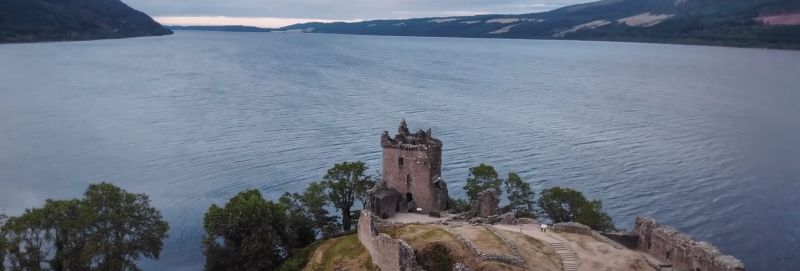 Over the weekend of August 26th and 27th, hundreds of volunteers gathered on the shores and on the waters of Loch Ness for what was billed as the largest search for the Loch Ness monster in 50 years. What was discovered during the “quest” weekend?
Over the weekend of August 26th and 27th, hundreds of volunteers gathered on the shores and on the waters of Loch Ness for what was billed as the largest search for the Loch Ness monster in 50 years. What was discovered during the “quest” weekend?
The so-called monster proved to be elusive, despite hundreds of searchers using everything from binoculars and webcams to thermal-imaging drones and hydrophones. With live streaming of the event, the world was invited to observe, but sadly for the Nessie enthusiasts, the monster did not show.
One UK couple says they ‘want to believe’ that they spotted the Loch Ness Monster after noticing an unusual shape in the water. The couple from Hull claim they saw a mysterious squiggly line on the horizon after going for a swim in the lake – which then moved to the left and disappeared.
Researchers with the production company Dragonfly Films claim to have captured the “first ever video” of the Loch Ness Monster. The video taken at night using a thermal-imaging drone appears to show what may be a large animal relaxing on the bank, although what the video actually captured is unclear.
Last year we posted about a sighting of weird beasties in the loch which turned out to be a small herd of alpacas, that had escaped their enclosure and decided to go for a swim.
The BBC reports that observers on a boat using acoustic equipment reported four unidentified “gloops” but then realized their recording device wasn’t plugged in.
A series of images described as the “most exciting” photographs in decades purportedly of the fabled creature, showed something spinning and rolling in the loch about 200 meters from shore.
The photographs were not taken during the quest weekend, however. Chie Kelly, 51, took the photos of what appears to be a large creature on the surface of the loch in August five years ago.
Nevertheless, paranormal investigator Hayley Stevens doubts that the photograph is of the famous cryptid and that the “time of year and location” points to it being a large sturgeon.
“The photos were taken in August 2018 and sturgeon migrate into fresh water in late summer and early autumn to mate, before heading back out to coastal waters,” writes Stevens on her blog Hayley is a Ghost.
“Sturgeon can grow very large – the Atlantic and European sturgeon, which are native to the UK, can grow up to 5 meters in length.”
While not related to Loch Ness there has been a recent sighting of what was described as a “sea monster” off the west coast of Scotland. A Royal Navy Vanguard class submarine returning to Faslane after a 197-day nuclear deterrent patrol was enrobed in an impressive growth of marine fouling. Observers commented that the nuclear ballistic missile sub looked like a “sea monster that had emerged from a long slumber at the bottom of the ocean.”
Thanks to Alaric Bond for contributing to this post.
